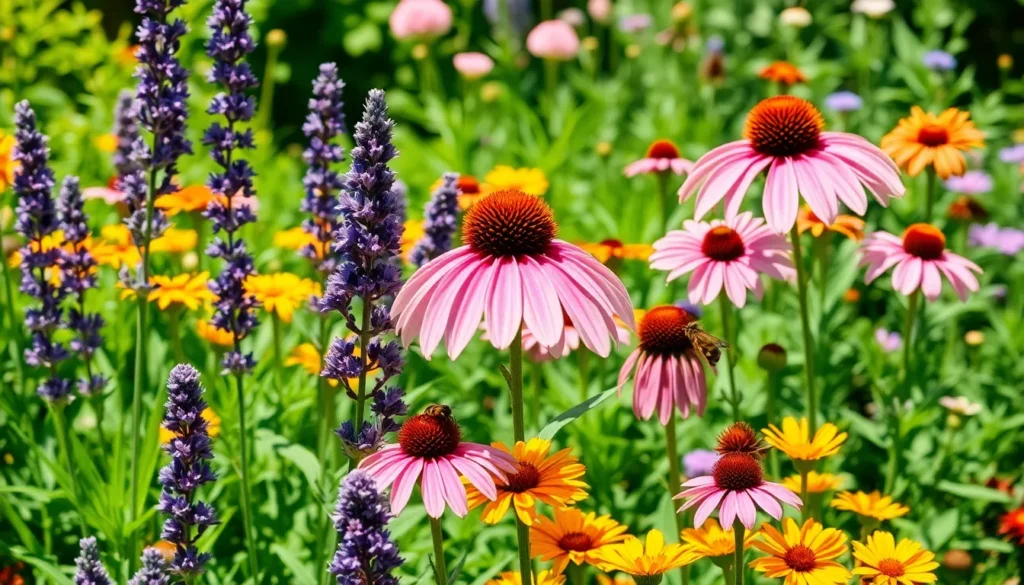Imagine stepping into your garden, where the gentle buzz of bees and the flutter of butterflies create a symphony of life. Whether you’re a beginner just dipping your toes into the world of gardening or a seasoned green thumb, attracting pollinators to your garden is a magical way to enhance both the beauty and productivity of your outdoor space.
This guide, “15 Best Attracting Pollinators To Your Garden,” offers a treasure trove of insights that are both practical and inspiring. By following these tips, you’ll not only support vital ecosystems but also enjoy a more bountiful harvest, as pollinators play a crucial role in the success of your plants.
Embrace the joy of connecting with nature as you learn how to invite these essential creatures into your garden sanctuary. With clear steps and expert advice, you can feel confident that your garden will flourish, becoming a vibrant haven for pollinators and a source of pride for you.
Coneflowers (Vibrant Colors for Bees and Butterflies)
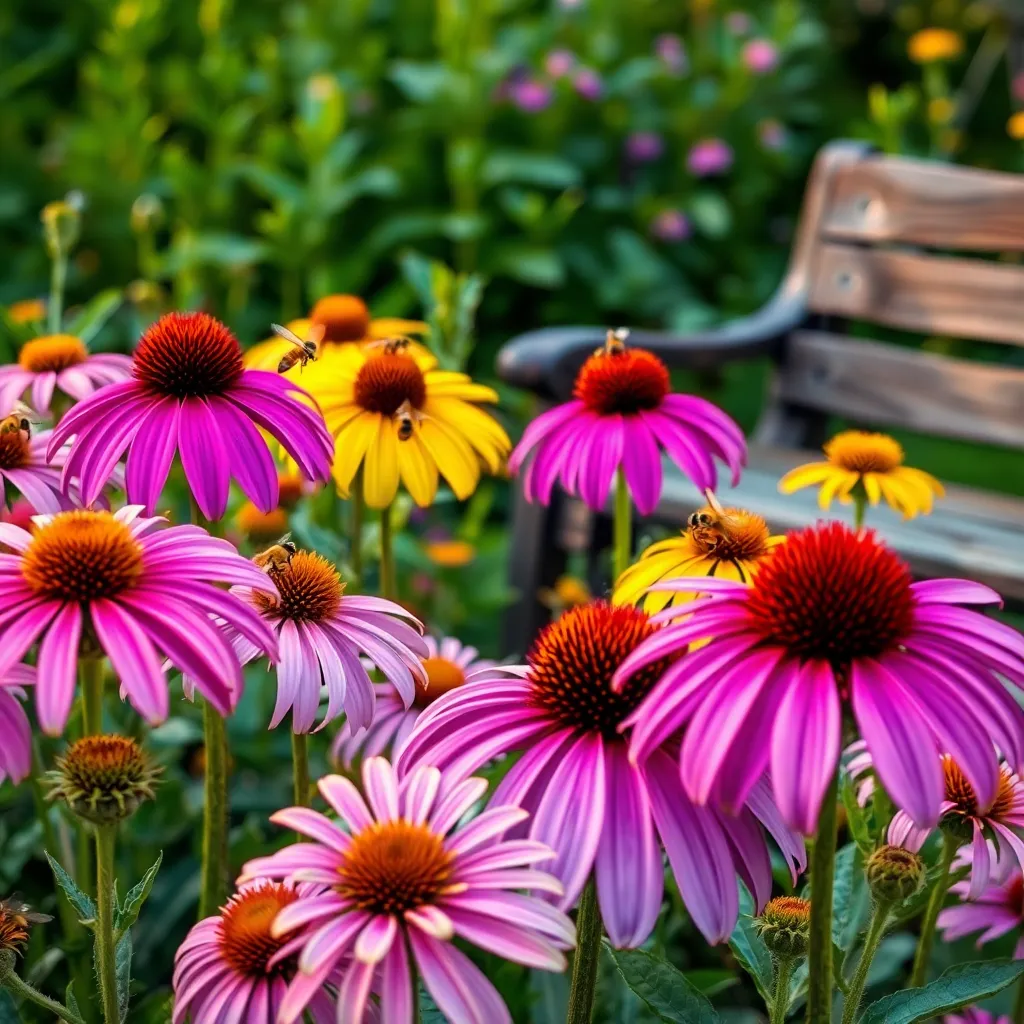
Coneflowers, also known as echinacea, are a fantastic choice for gardeners looking to add vibrant colors and attract pollinators like bees and butterflies to their gardens. These hardy perennials thrive in a variety of climates and are known for their ability to withstand both drought and heat.
To successfully grow coneflowers, plant them in a location with full sun as they require at least 6 to 8 hours of sunlight daily. Ensure the soil is well-draining, as coneflowers prefer slightly acidic to neutral soil, with a pH of 6.0 to 7.0.
When establishing your coneflower patch, water them regularly during their first growing season to help establish strong roots. Once established, these plants are quite drought-tolerant, making them a low-maintenance option for your garden.
For a more extensive bloom, deadhead the flowers regularly, which encourages the plant to produce more blooms throughout the growing season. As an advanced tip, consider leaving some seed heads at the end of the season to provide food for birds and to allow for natural seeding next spring.
Lavender Plants (Fragrant Blooms for Pollinator Attraction)
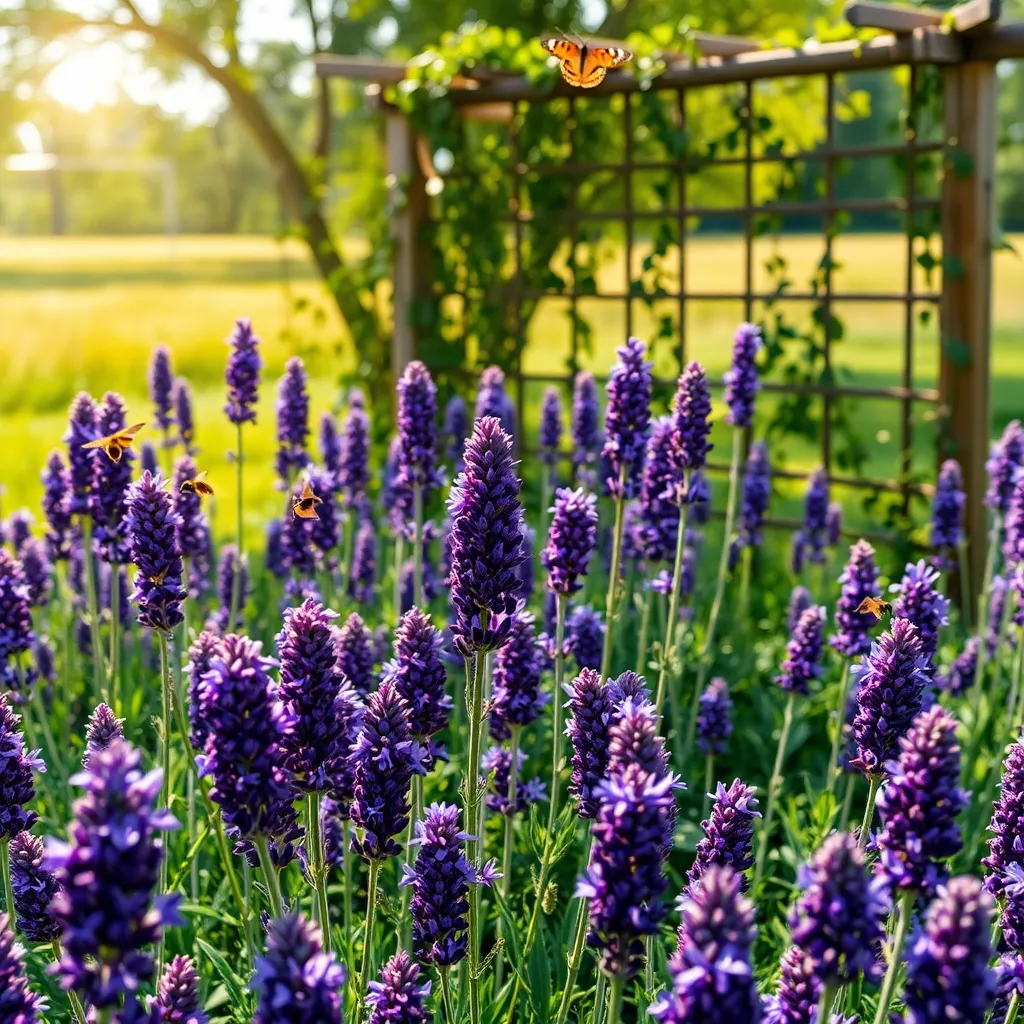
Lavender is a fantastic choice for attracting pollinators with its enticing aroma and stunning purple blooms. This plant thrives in well-drained soil and requires full sun to truly flourish, making it a perfect addition to a sunny garden spot.
To successfully grow lavender, it’s essential to choose a location with good air circulation to prevent disease. Water your lavender deeply but infrequently, allowing the soil to dry out between waterings, which mimics its natural Mediterranean habitat.
For beginners, start with hardy varieties like English lavender, which are more adaptable to various climates. Experienced gardeners might explore French or Spanish varieties, which offer unique leaf shapes and colors, albeit with slightly less cold tolerance.
Pruning is key to maintaining a healthy lavender plant, encouraging robust growth and more prolific blooms. Trim back about one-third of the plant in early spring or after the first bloom cycle, ensuring you avoid cutting into the woody stems.
Bee Hotels (Create a Sanctuary for Solitary Bees)
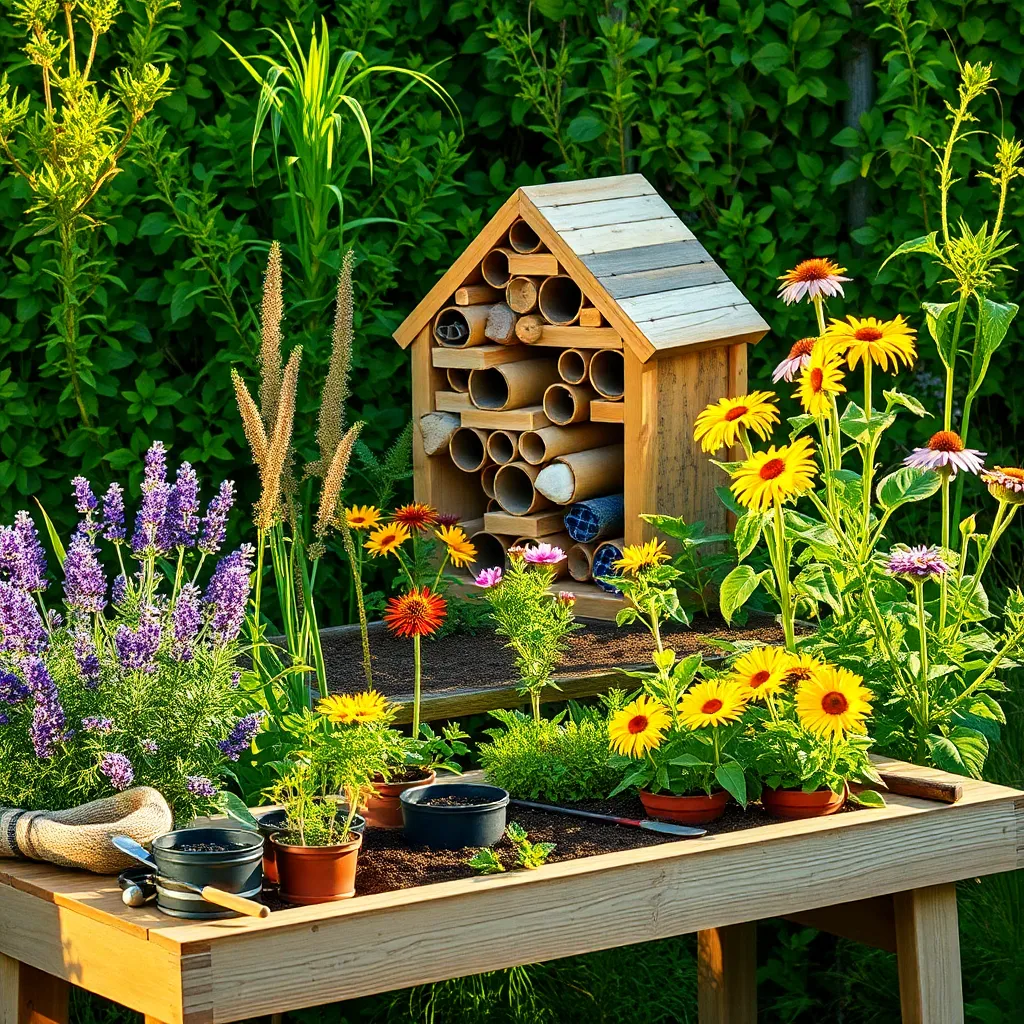
Creating a bee hotel is a fantastic way to attract solitary bees, which are vital pollinators, to your garden. Unlike honeybees, solitary bees do not live in colonies and thus need individual nesting spaces.
To start, select a sunny spot in your garden that is sheltered from the wind, as warmth and protection are crucial for these bees. You can construct a simple bee hotel using materials like bamboo canes, hollow stems, or wooden blocks with drilled holes.
Ensure the holes are drilled to a depth of 3-6 inches and diameters ranging from 1/8 to 3/8 inches to cater to different bee species. It’s important to keep the bee hotel dry, so consider placing a roof over it to shield it from rain.
Advanced gardeners might want to experiment with using different materials to see which attract the most bees. Additionally, it’s beneficial to periodically clean your bee hotel to prevent disease and ensure it remains a welcoming habitat for bees.
Butterfly Bush (Nectar-Rich Flowers for Fluttering Friends)
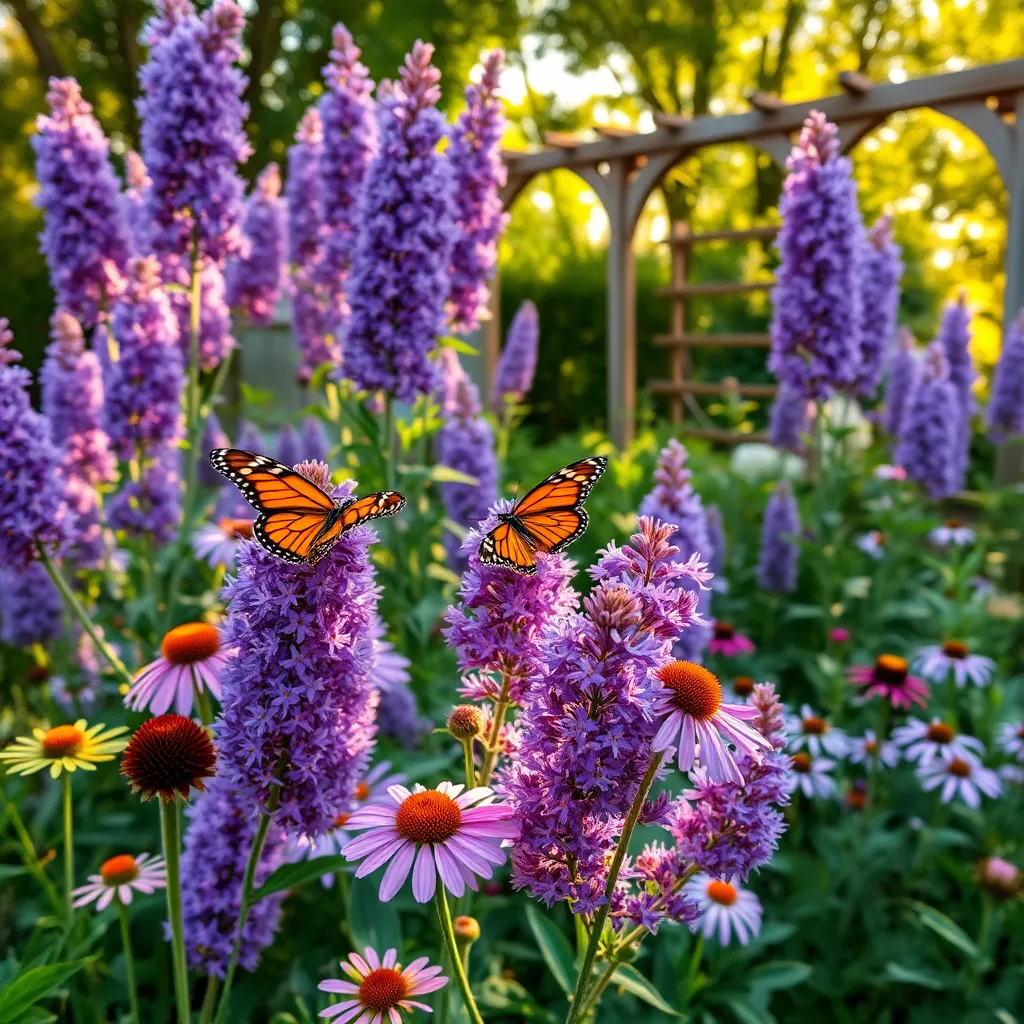
The butterfly bush, known for its nectar-rich blooms, is a magnet for various pollinators, particularly butterflies. To ensure your butterfly bush thrives, plant it in a location with full sun, as it requires at least six hours of direct sunlight daily.
For best growth, the butterfly bush prefers well-drained soil, but it is quite adaptable and can tolerate a variety of soil types. Consider adding compost or other organic matter to improve soil fertility and drainage if needed.
Regular watering is crucial during the bush’s establishment phase, yet once matured, it becomes quite drought-tolerant. However, for lush blooms that attract a plethora of pollinators, maintain a consistent watering schedule, especially during dry spells.
Pruning is an essential task for keeping your butterfly bush healthy and prolific. Trim the plant back in early spring to promote new growth and remove any deadwood, which will encourage a more robust blooming season.
Native Wildflower Mix (Support Local Pollinator Species)
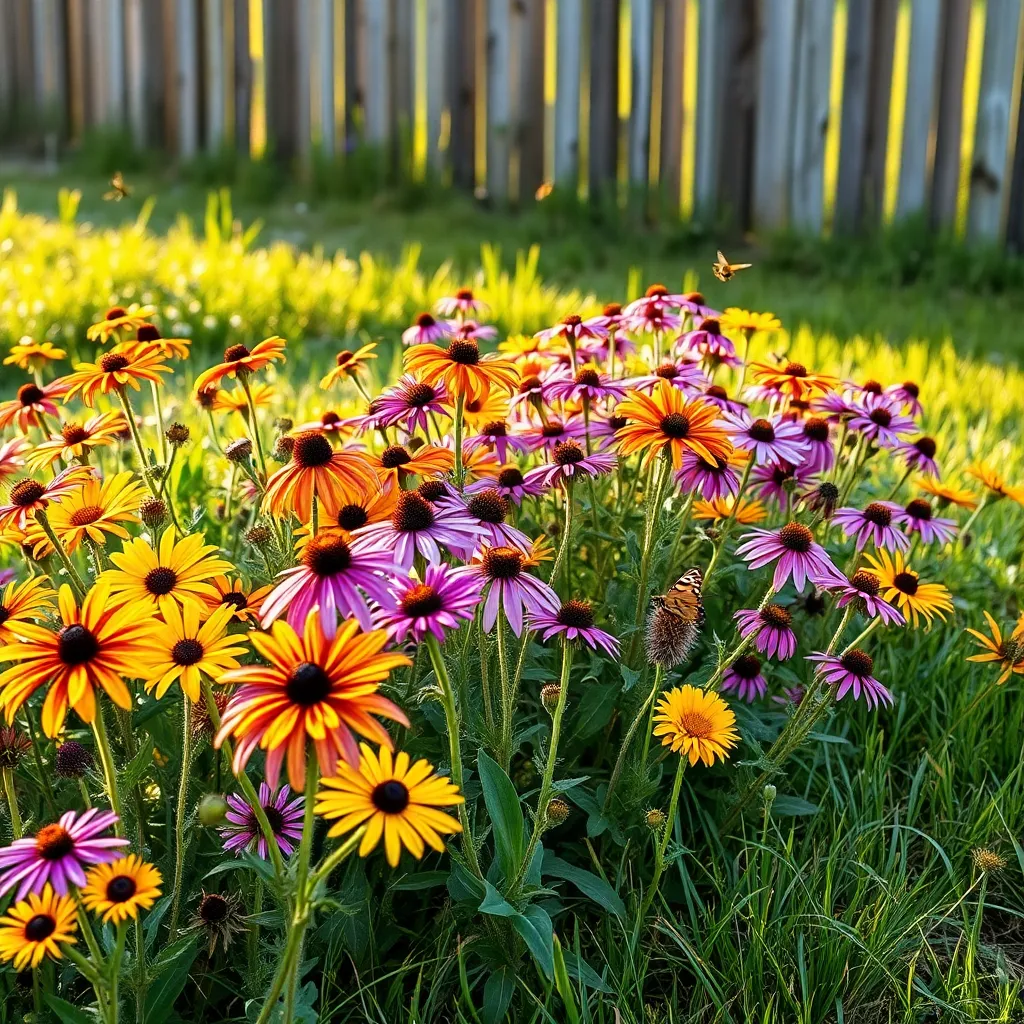
Integrating a native wildflower mix into your garden is an excellent way to support local pollinator species. These mixes typically contain a variety of species that are naturally adapted to the local climate and soil conditions, making them easier to maintain with minimal intervention.
Start by selecting a sunny spot in your garden, as most wildflowers thrive in full sunlight. Before planting, prepare the soil by removing any weeds and loosening it with a rake, allowing for optimal seed-to-soil contact.
When sowing the seeds, aim for an even distribution across the designated area to ensure a lush, continuous bloom. Water gently but thoroughly after planting, keeping the soil consistently moist until the seeds germinate, which can take anywhere from 7 to 30 days depending on the species.
For experienced gardeners looking to enhance the diversity of their wildflower patch, consider incorporating a mix of annuals and perennials to enjoy blooms throughout the growing season. Regularly check for and remove invasive species that may outcompete your native plants, ensuring a thriving habitat for pollinators.
Hummingbird Feeders (Supplementary Nectar Source)
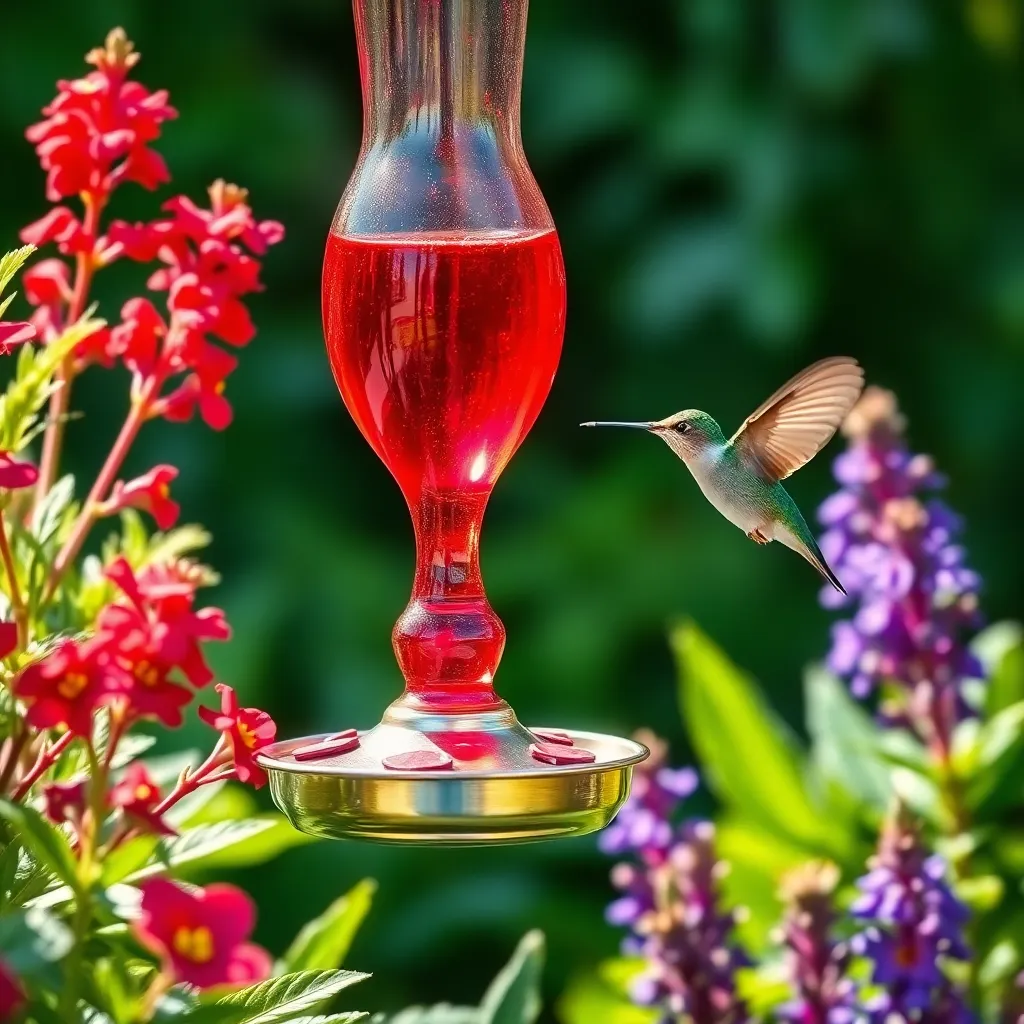
Adding a hummingbird feeder to your garden is a fantastic way to supplement natural nectar sources and attract these delightful pollinators. Place the feeder in a shaded area to prevent the sugar water from spoiling quickly and ensure it’s easily accessible for refilling and cleaning.
To make your own hummingbird nectar, simply mix one part white granulated sugar with four parts water. Avoid using honey, artificial sweeteners, or red dye, as these can be harmful to the birds.
Regular maintenance of your feeder is crucial for the health of visiting hummingbirds. Every few days, especially in warm weather, clean the feeder thoroughly with hot water and a safe scrubbing brush to prevent mold and bacteria growth.
For those looking to enhance their garden’s appeal to hummingbirds, consider planting flowers that naturally attract them, such as bee balm, trumpet vine, and salvia. This combination of feeders and flowering plants ensures a steady food source, supporting these valuable pollinators throughout their season.
Salvia Varieties (Long-Lasting Blooms for Continuous Feeding)

Salvia varieties are renowned for their vibrant, long-lasting blooms and ability to attract a plethora of pollinators, including bees, butterflies, and hummingbirds. These versatile plants thrive in various climates, making them an excellent choice for many gardens across different regions.
To successfully grow salvias, ensure they are planted in well-draining soil and receive plenty of sunlight, ideally six hours or more per day. They are drought-tolerant once established, but regular watering during their first growing season will help them develop a robust root system.
For beginners, start with varieties like ‘May Night’ or ‘Caradonna,’ which are known for their easy care and prolific blooms. Advanced gardeners might explore more exotic types such as ‘Amistad’ or ‘Black and Blue,’ which offer unique colors and forms to enrich any garden.
To encourage continuous blooming and feeding for pollinators, regularly deadhead spent flowers and apply a balanced fertilizer in the spring. This simple maintenance ensures your salvias remain lush and attractive throughout the growing season.
Water Features (Essential Hydration for Pollinators)
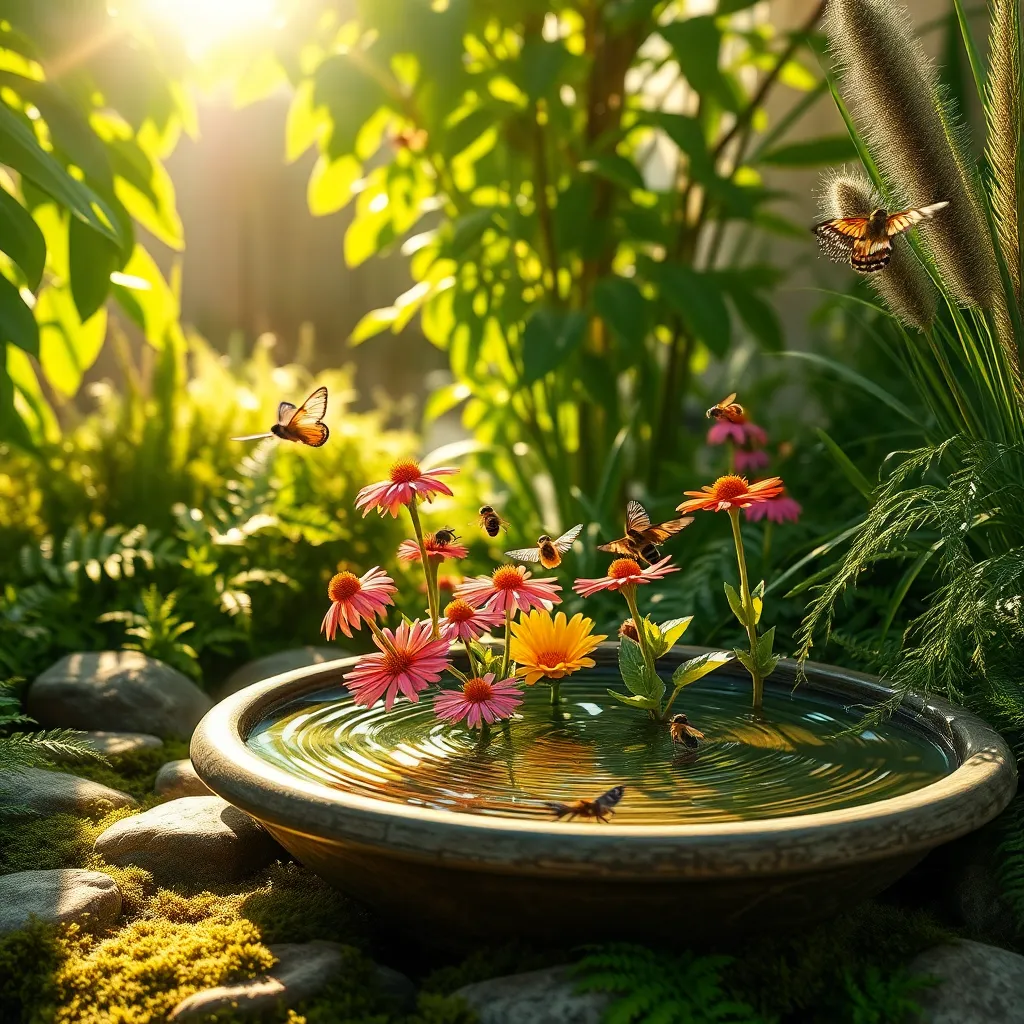
Creating a water feature in your garden can significantly enhance the presence of pollinators, providing them with a much-needed hydration source. It’s essential to keep the water clean and fresh, as pollinators like bees and butterflies are attracted to shallow water with landing areas.
Consider installing a simple bird bath or a shallow dish filled with stones and water. Ensure that the water level is just above the stones so pollinators can easily reach it without the risk of drowning.
Position your water feature in a sunny spot, but with some nearby shade to prevent the water from heating excessively. This not only keeps the water cool but also ensures that it remains a welcoming hydration station throughout the day.
For those wanting to take it a step further, adding native aquatic plants like water lilies can provide additional benefits. These plants offer extra perching spots and can help maintain water quality by absorbing excess nutrients.
Sunflowers (Tall, Sturdy Structures for Pollinator Perches)
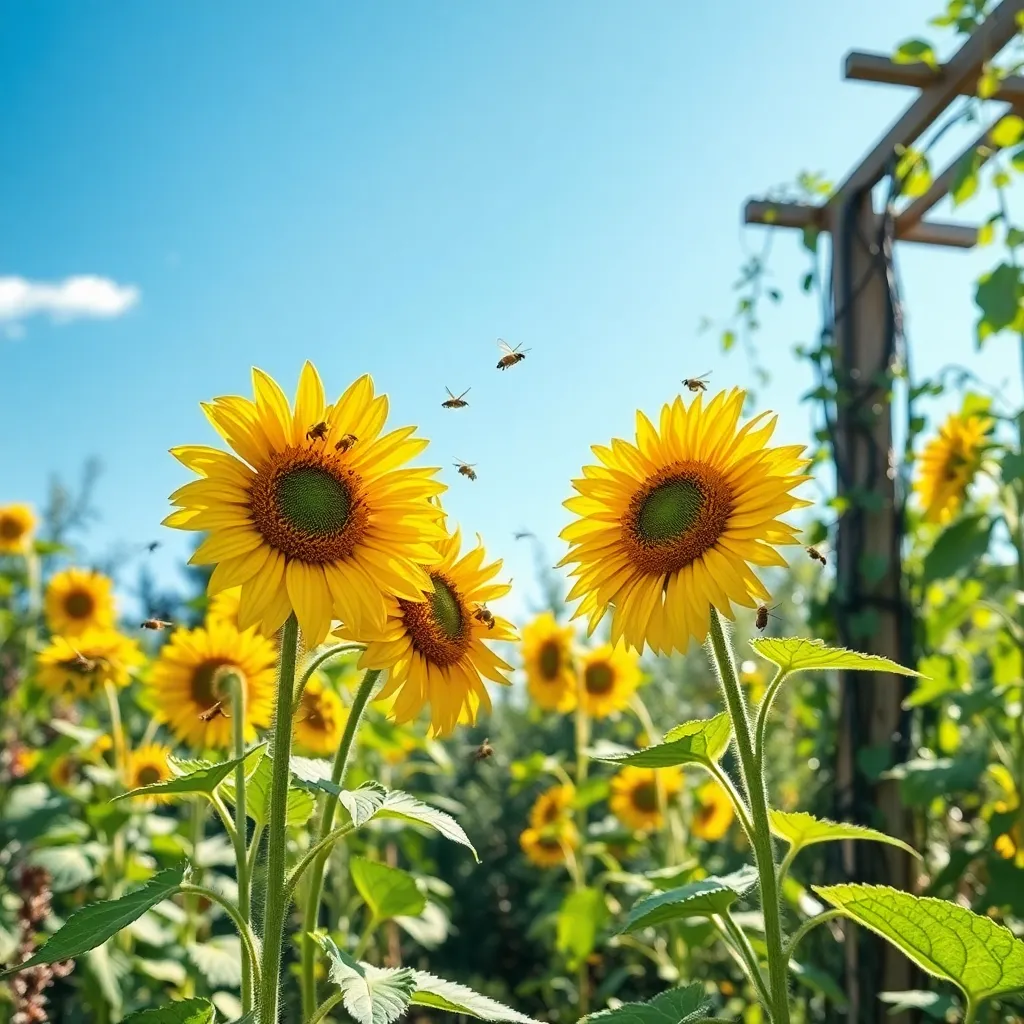
Sunflowers are not only a spectacular addition to any garden, but they also serve as excellent perches for pollinators. Their towering height and bright blooms attract bees, butterflies, and even birds, making them a lively part of your garden ecosystem.
For successful sunflower cultivation, select a site that receives full sun for at least six to eight hours a day. Ensure the soil is well-draining and rich in organic matter, which will provide the necessary nutrients for these hardy plants to thrive.
Beginner gardeners will find sunflowers easy to grow from seed, planting them directly in the garden after the last frost date. To give your plants a strong start, water them regularly, particularly during dry spells, to keep the soil consistently moist but not waterlogged.
Experienced gardeners can experiment with different sunflower varieties, from the classic Mammoth to more compact options like Teddy Bear. Rotating sunflower plantings each year can help prevent soil-borne diseases and pests, ensuring a healthy garden environment.
Herb Spiral Gardens (Multi-Level Planting for Diverse Pollinators)

Herb spiral gardens provide a unique way to maximize space while attracting diverse pollinators. By building a spiral, you create multiple microclimates that cater to a variety of herbs, each offering distinct benefits to pollinators like bees and butterflies.
Constructing a herb spiral involves stacking soil in a spiral shape, which increases the surface area for planting. This design allows for different moisture levels, with the top being drier and the bottom retaining more water, making it ideal for a range of herbs.
Begin by selecting a sunny spot and using stones or bricks to form the spiral structure, which should be about three feet high. Fill the spiral with a mixture of good-quality garden soil and compost to provide essential nutrients for the herbs.
Plant drought-tolerant herbs like rosemary and thyme at the top where the soil is driest. In the middle, consider planting herbs that prefer more moisture, such as basil and parsley, while water-loving herbs like mint can thrive at the base.
Water your herb spiral regularly, especially during dry spells, to ensure healthy plant growth and consistent nectar supply for pollinators. Mulching with straw or wood chips can help retain moisture and reduce the frequency of watering.
For advanced gardeners, consider integrating companion plants that repel pests and enhance pollinator attraction, such as marigolds or nasturtiums. Regularly harvest herbs to encourage new growth and increase flowering, which further attracts pollinators.
Milkweed Plants (Essential Host for Monarch Butterflies)
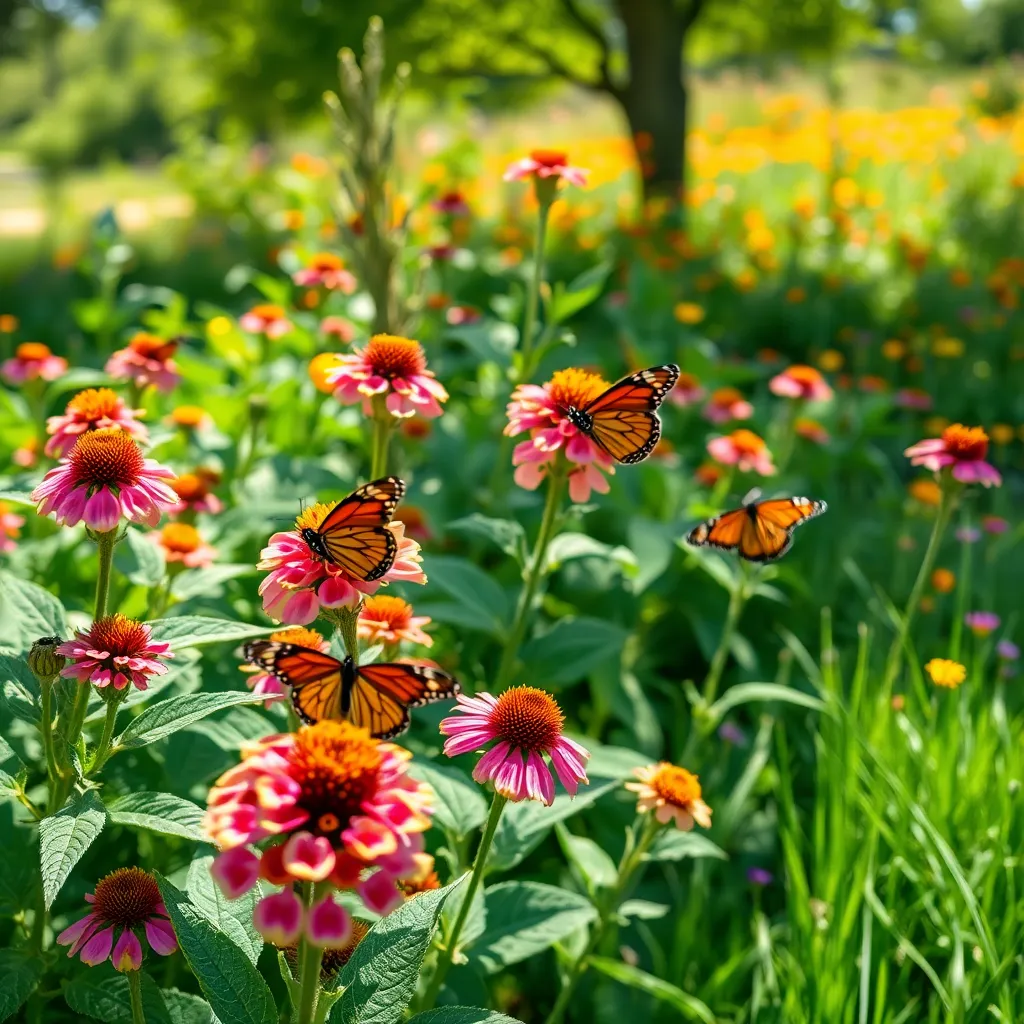
Milkweed plants are essential for gardeners looking to support monarch butterflies, as they are the only host plant for monarch caterpillars. To successfully grow milkweed, it is important to select a sunny location with well-draining soil, as these plants thrive best in full sun.
Starting with seeds, gardeners should cold-stratify milkweed seeds by placing them in a damp paper towel inside a plastic bag in the refrigerator for about 30 days before planting. This mimics the natural winter dormancy period and enhances germination success.
Watering is crucial during the initial growth phase; aim to keep the soil evenly moist but not waterlogged. Once established, milkweed plants are quite drought-tolerant, making them a low-maintenance choice for many climates.
For those looking to add variety, consider planting multiple species of milkweed such as common milkweed (Asclepias syriaca) or swamp milkweed (Asclepias incarnata) to provide diverse habitats. This not only benefits monarchs but also attracts a wide range of pollinators to your garden.
Pesticide-Free Zones (Safe Havens for Pollinator Populations)
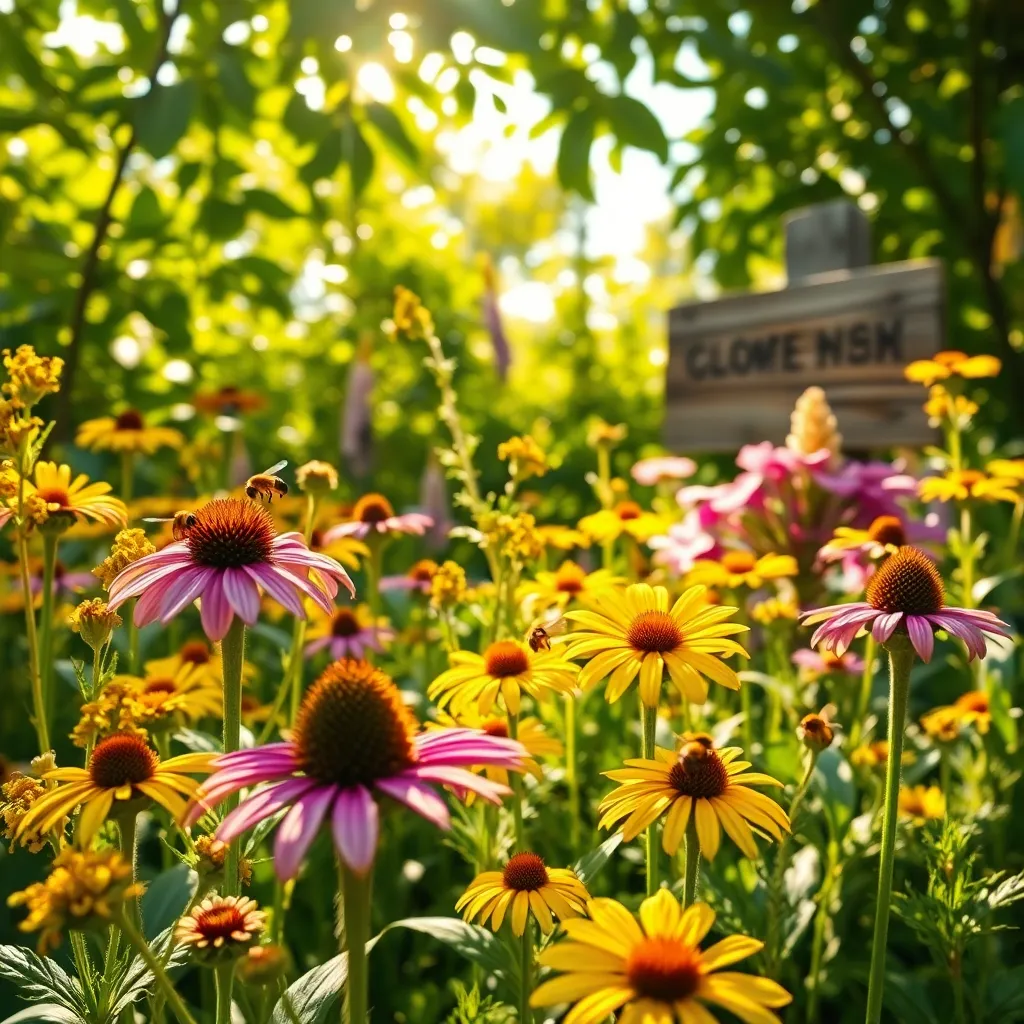
Creating a pesticide-free zone in your garden is a crucial step toward fostering a safe haven for pollinators. Eliminating chemical pesticides helps protect beneficial insects like bees, butterflies, and ladybugs, which are essential for pollination and natural pest control.
One effective method to maintain a pesticide-free garden is to implement companion planting. By strategically planting certain species together, you can naturally deter pests and support a balanced ecosystem; for example, marigolds can help repel harmful nematodes from vegetable beds.
Encourage biodiversity by planting a variety of native flowering plants that bloom at different times of the year. This ensures a continuous food source for pollinators and helps maintain their populations throughout the seasons.
For those with more experience, consider introducing a small pond or water feature to your garden. Not only do these provide a drinking source for pollinators, but they also attract other beneficial wildlife that contributes to the garden’s health.
Comfrey Borders (Nutrient-Rich Leaves for Ground Cover and Pollinators)
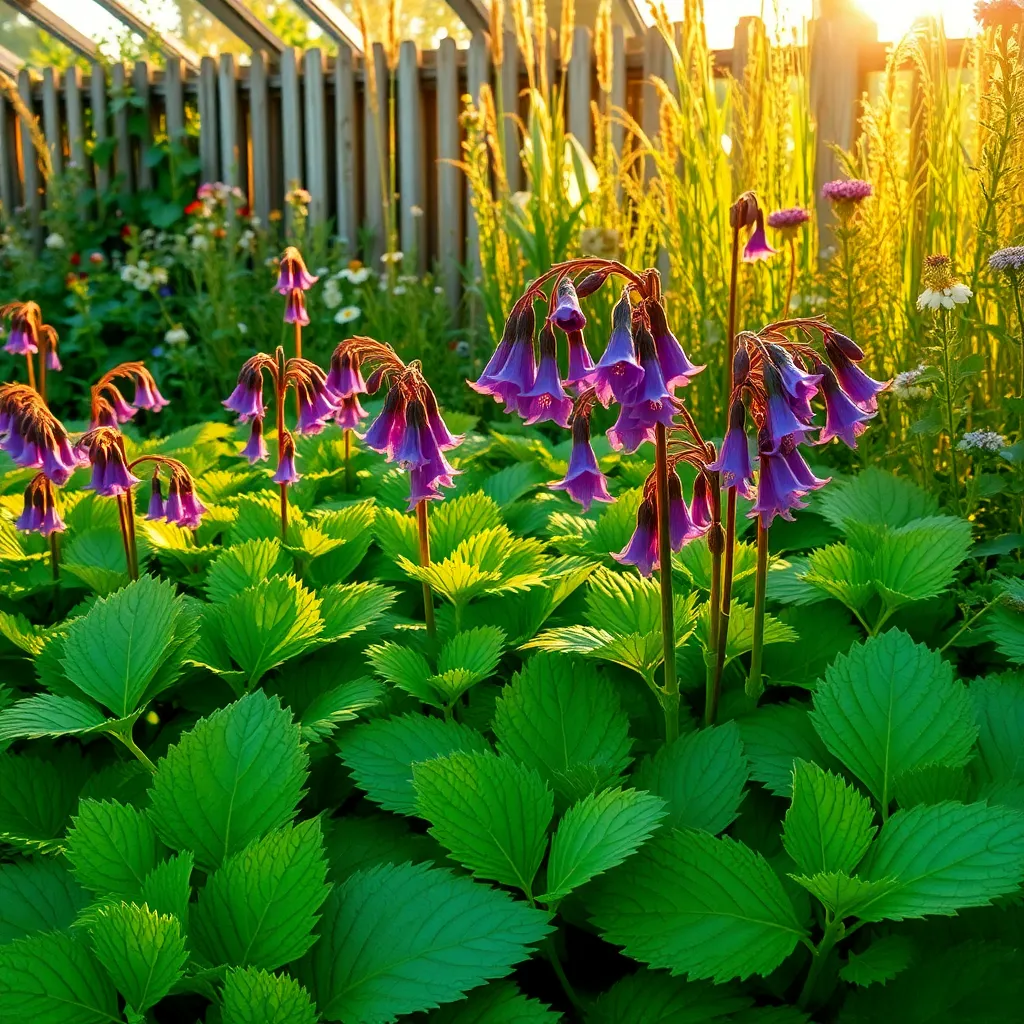
Comfrey is a fantastic addition to any garden seeking to attract pollinators while enriching the soil. Its broad, nutrient-rich leaves create a lush ground cover that suppresses weeds and retains moisture, making it a practical choice for gardeners looking to improve their garden ecosystem.
To grow comfrey effectively, choose a location with full sun to partial shade and well-drained soil. Comfrey is hardy and can tolerate a wide range of soil types, but it thrives best in fertile, loamy soil, so consider amending your soil with organic matter if necessary.
Water comfrey regularly, especially during dry spells, to ensure robust growth and flowering. Once established, comfrey is relatively drought-tolerant, but consistent moisture will encourage more vibrant blooms, which are essential for attracting pollinators like bees and butterflies.
For advanced gardeners, consider using comfrey’s leaves as a nutrient-rich mulch or as a component in compost. When cut back, these leaves break down quickly and release valuable nutrients, like potassium, into the soil, enhancing the growth of surrounding plants and further supporting a thriving garden environment.
Zinnia Beds (Bright Blooms for Diverse Pollinator Attraction)
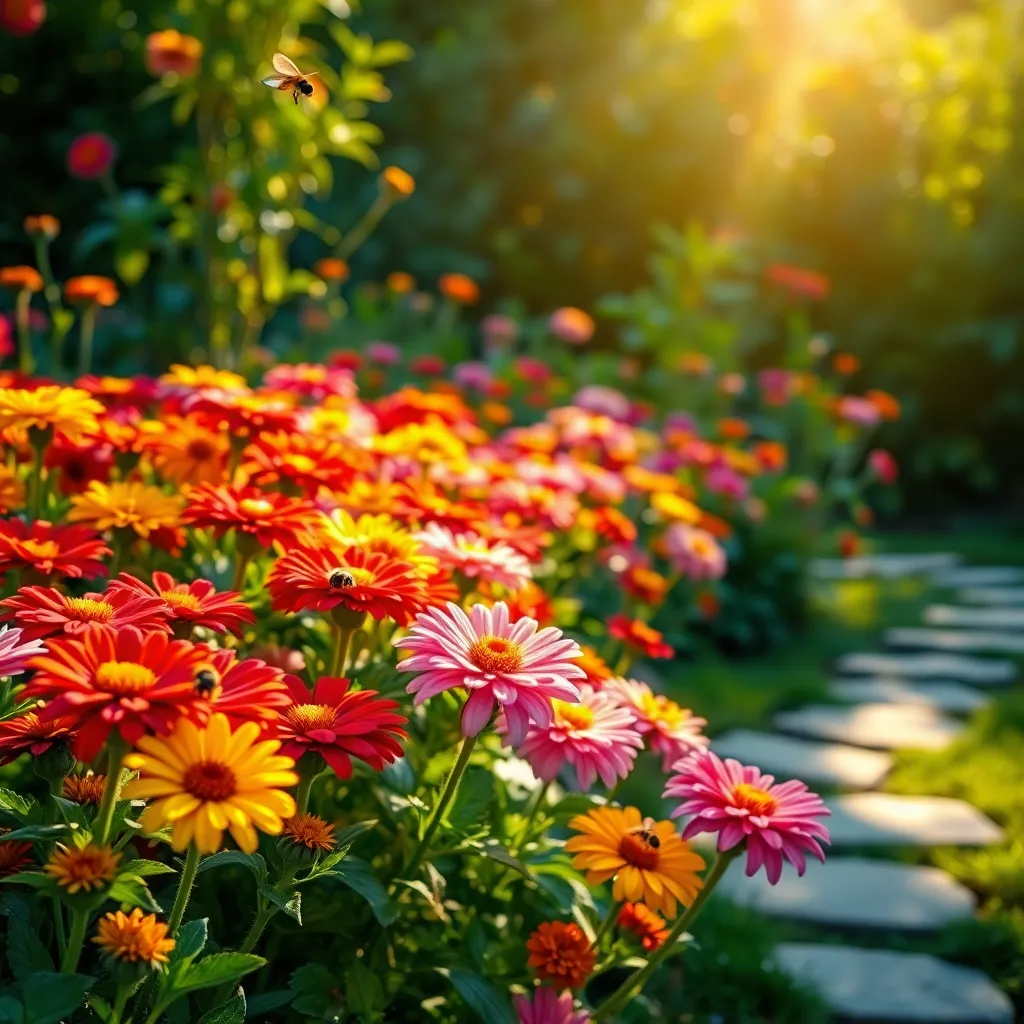
Zinnias are a vibrant addition to any garden, offering a brilliant display of colors that attract a wide range of pollinators. To ensure your zinnia bed thrives, plant them in a sunny location, as they require at least six hours of direct sunlight daily.
When preparing to plant zinnias, enrich the soil with organic matter to improve drainage and fertility. These flowers thrive in well-draining soil with a pH level between 5.5 and 7.5, making them adaptable to various garden environments.
Water zinnias consistently but avoid overhead watering, which can lead to powdery mildew. Instead, provide deep watering once a week, allowing the soil to dry out slightly between waterings to promote strong root growth.
For gardeners looking to extend the blooming period, consider deadheading spent flowers regularly. This encourages continuous blooming and keeps your zinnia bed lush and inviting to pollinators throughout the growing season.
Clover Lawn Alternatives (Low-Maintenance Pollinator-Friendly Groundcover)
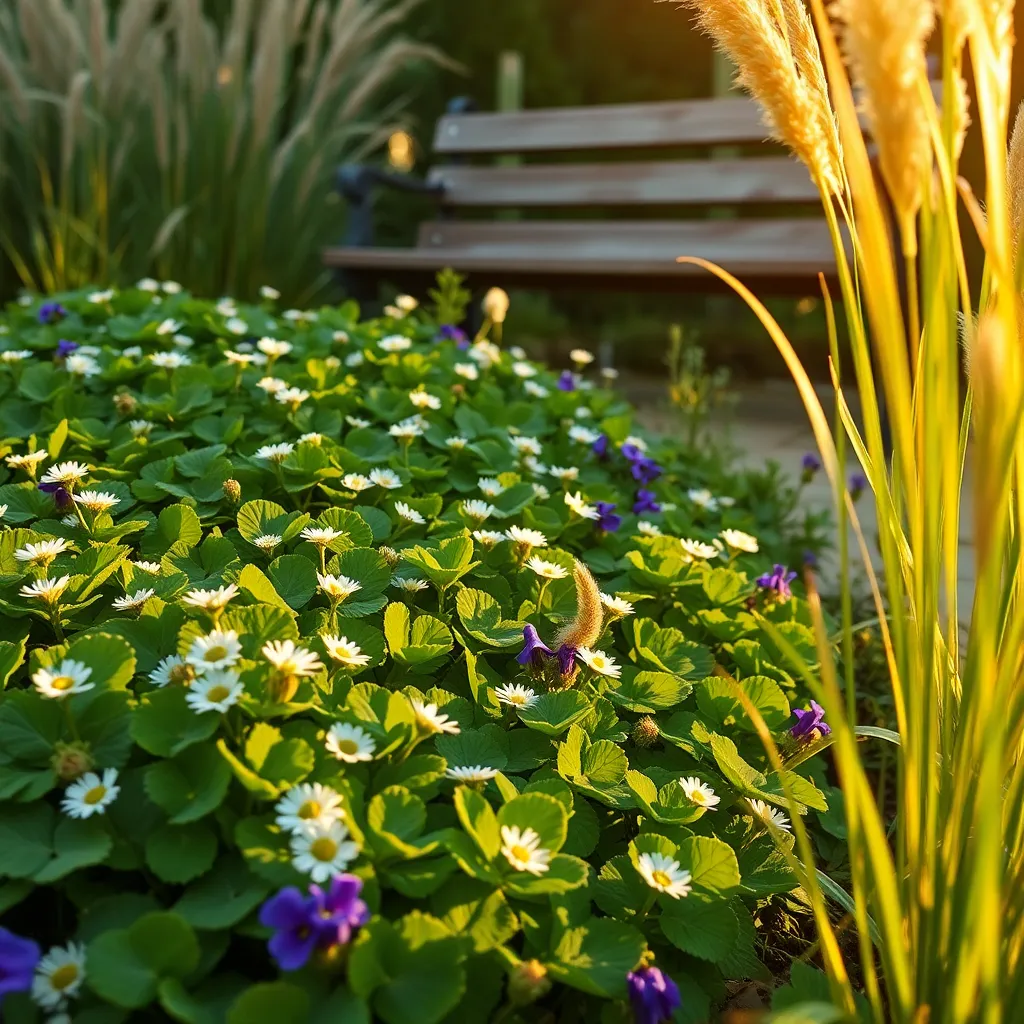
Instead of traditional clover lawns, consider planting a mix of low-maintenance, pollinator-friendly groundcovers. These alternatives not only provide a lush green cover but also create a haven for bees, butterflies, and other beneficial insects.
One excellent option is creeping thyme, which thrives in well-drained soil and requires minimal watering once established. Its tiny, fragrant flowers attract pollinators, and it can withstand light foot traffic, making it an ideal choice for pathways and sunny spots.
Another great choice is sedum, known for its drought tolerance and vibrant blooms. Sedum varieties adapt well to various soil types, but they particularly excel in sandy or rocky soils, offering a splash of color in the garden with minimal care.
Consider planting chamomile for a soft, aromatic groundcover that attracts pollinators with its daisy-like flowers. It prefers well-drained soil and moderate watering, and its dense growth helps suppress weeds naturally.
Conclusion: Growing Success with These Plants
In essence, nurturing your garden to attract pollinators mirrors the nurturing of relationships—both require attention, diversity, and understanding. This article unveiled 15 key concepts: from planting a variety of native flowers to providing water sources and avoiding pesticides, each step fosters an environment where pollinators—and by extension, relationships—can thrive. Just as diverse plants create a vibrant garden, embracing diversity in relationships enriches our lives.
For an immediate impact, why not start by planting a few native flowers in your garden today? This small step can lead to a flourishing ecosystem, just as small gestures can strengthen the bonds we cherish. As you embark on this journey, bookmark this article to revisit these insights and continue cultivating your relationship garden.
Remember, the seeds of today’s actions can bloom into tomorrow’s successes. By fostering a healthy environment for pollinators, you’re also nurturing the relationships that matter most. Let this be your guide to building connections that are as resilient and beautiful as the garden you tend. Save this article, and let it be your go-to resource for a thriving garden and thriving relationships.

